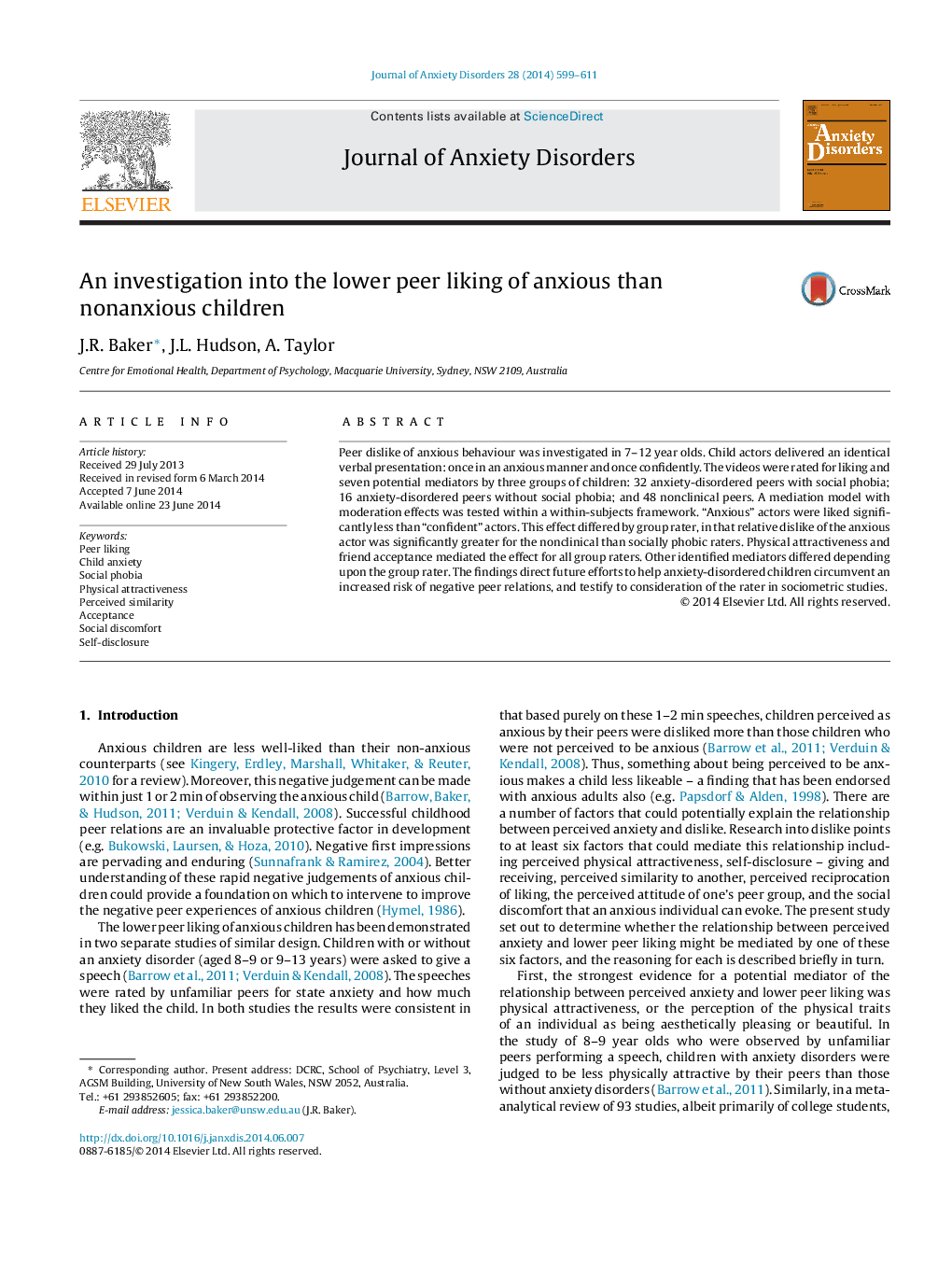| کد مقاله | کد نشریه | سال انتشار | مقاله انگلیسی | نسخه تمام متن |
|---|---|---|---|---|
| 909323 | 917271 | 2014 | 13 صفحه PDF | دانلود رایگان |
• Child actors were filmed performing a script in an anxious or confident manner.
• The videos were presented to clinically anxious or nonclinical (NC) children to rate.
• The “anxious” actors were less liked than the “confident” actors.
• Lower liking of the anxious actor was greater for NC than socially phobic raters.
• Seven identified mediators were found to differ depending upon the rater's status.
Peer dislike of anxious behaviour was investigated in 7–12 year olds. Child actors delivered an identical verbal presentation: once in an anxious manner and once confidently. The videos were rated for liking and seven potential mediators by three groups of children: 32 anxiety-disordered peers with social phobia; 16 anxiety-disordered peers without social phobia; and 48 nonclinical peers. A mediation model with moderation effects was tested within a within-subjects framework. “Anxious” actors were liked significantly less than “confident” actors. This effect differed by group rater, in that relative dislike of the anxious actor was significantly greater for the nonclinical than socially phobic raters. Physical attractiveness and friend acceptance mediated the effect for all group raters. Other identified mediators differed depending upon the group rater. The findings direct future efforts to help anxiety-disordered children circumvent an increased risk of negative peer relations, and testify to consideration of the rater in sociometric studies.
Journal: Journal of Anxiety Disorders - Volume 28, Issue 6, August 2014, Pages 599–611
